Customer engagement has no shortcuts. Customer engagement is important because it has become the route to every vital brand-customer interaction. Personalized marketing is what makes it relevant to your customer, each and every time. The more you know your customer, the better your customer can relate to who and how your brand is.
When you know your customers, you can create targeted marketing messages that perform better than generic messages.
Often, it only takes one terrible customer experience to damage the whole customer engagement.
If you think about it, customer engagement and customer experience belong to the same team, but we are talking about two different concepts.
Even when customer engagement and customer experience are not same, there is a clear correlation between both marketing term as they are significant to a company’s overall success.
What Is The Difference Between Customer Engagement And Customer Experience?
Customer engagement and customer experience are not the same. Customer experience has to do with how your customers perceive their interactions with your company. These interactions have a direct impact on the customer engagement.
For example, according to Google, travel consumers are exposed to more than 38,000 micro-moments during 60 days. This represents a lot of opportunities to deliver Wow moments that help your customer to be more engaged with your brand, product, service or team.
At the same time, it shows that there are a lot of opportunities to deliver the wrong experience. In other words, a bad customer experience can ruin an organization’s entire customer engagement effort with a customer. Customer engagement is the emotional relationship between a customer and your business. This relationship is driven by the customer’s values, which are inherent to each customer’s particular context.
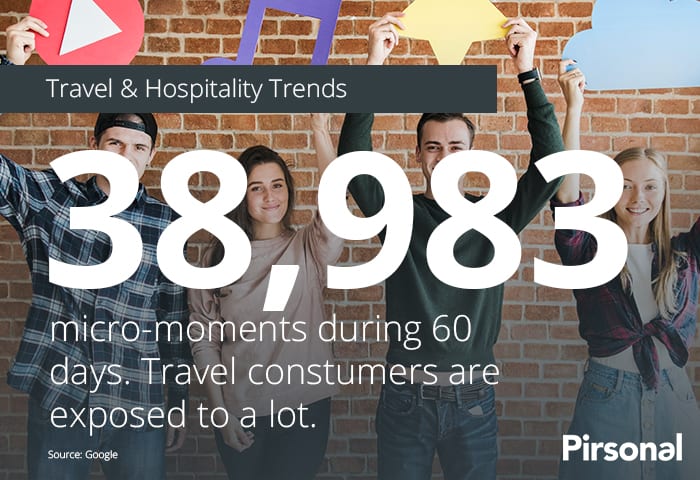
In the last few years, customer experience management (also known as CXM or CEM) has become really popular. It is the management of customer interactions through each physical and digital touchpoint in order to deliver personalized experiences that drive brand loyalty and increase revenue.
According to a study by Fortune Business Insights, the global customer experience management market is anticipated to be worth USD 23.9 Billion by 2026, as against USD 6.2 Billion in 2018.
The fact that companies are increasing their investment in customer experience speaks to the importance that each micro-moment has. All these moments are reflected in the level of satisfaction, commitment and loyalty that customers have and that companies perceive.
The more successful your overall customer experience is, the more engaged your customer will be. The more engaged your customers are, the better conversions your personalized marketing campaigns will get.
Customer Engagement And Personalization
Every human been interacts with a brand. These interactions are powered by micro-moments, which at the same time are powered by individual contexts.
This reminds me of a customer service experience I hope I never forget.
As a child and a teenager, I lived in different countries. When I moved to Spain, in high school, I was the new guy. I have always been a bit shy, yet I have the privilege of being able to build good relationships with small groups of people.
During my last three years of high school, something really interesting happened. Every time I think about it, it helps me love even more what I do for a living.
The school cafeteria was very small. Break times looked like a cage with hungry animals.
I’m serious.
You know, teenagers.
At some point, I realized that when everyone was screaming in the cafeteria trying to get the waitress’s attention, I could get the exact same result without yelling.
By result, I mean being served. In no-time. Stress-free. The same amount of money.
Little by little, the more they knew me, the better the waiters served me.
Let’s look at this from a marketing standpoint:
Customer experience. Checked.
Customer engagement. Checked.
Upselling. Checked.
Loyalty. Checked.
All I had to do was to be very polite, remain silent because there was just too much noise, look at them politely, and raise my hand.
I know, this seems pretty normal. But I promised that place was like a cage :p.
Wonderful.
If you have ever been to Spain, you know how restaurants, cafeterias, and bars are. I’m sure you got this.
I keep using the same “trick” whenever I can.
This personal approach to customer engagement works because we are humans. We love interactions. We love being part of something that is bigger than us.
That “something” sometimes is our very own customer success story. This is why personalization and customer engagement are totally connected.
But there is even more.
11 Top Reasons Why Customer Engagement Is Important To Redefine Your Personalized Marketing Strategy?
Gallup research shows that a fully-engaged customer represents 23% more revenue than average. This reason alone helps us understand the importance of customer engagement. Below I list eleven reasons why customer engagement is important to enhance your personalized marketing strategy.
1. Customer Engagement Aligns Brand Engagement And Value Proposition
Customer engagement is a mirror for the different brand values a company reflects. At the same time, when the degree of engagement customers have is aligned with what an organization offers, there is a win-win scenario. This makes companies more successful and empowers customers because of the perceived value.
Let me explain this a bit better.
One of the reasons why I married my wife is because I knew her very well. We became best friends way before we got into a relationship.
When we started dating, we basically already had a time-frame for our wedding in mind. We got engaged but there was already a solid commitment from day one.
And, thank God and some hard work, here we are.
The thing is that brands and customers work in the same way. As Daniel Threlfall says:
Customer engagement is more than just clever tweets and using emojis in your Facebook posts.
Customers and brands often forget what engagement means. Customer engagement requires an approach based on personalization. This emphasizes the importance of delivering the customer experience (or CX) that wows your customers. It helps you share the information customers and brand stakeholder need in the shortest period of time to targeted customer segments.
The reason for this is because customers and brands are then aligned to mutually beneficial interests. Doing business with each becomes an exchange that makes sense.
When there is commitment, talking great things about a brand you like becomes easier. Getting referrals to your pipeline goes smooth.
Take into account that specially in times of crisis, customer experience makes the difference. If your organization doesn’t over-perform, your customers will go away.
You don’t want this to happen.
Let me stop for a moment to talk a bit more about brand engagement.
Brand engagement is the process of forming an emotional or rational attachment between a consumer and a brand. It goes under the brand management umbrella.
It must be a fundamental part of the corporate culture and values for any brand company. Brand management is a function of marketing that uses techniques to increase the perceived value of a product line or brand over time.
When a couple gets engaged, it has a firm commitment to getting to the next step of greater commitment. Ideally, they will make a huge effort to know more about each other. They will talk about their expectations. They will polish up their differences. And so on.
This is how customer commitment starts. It start with a commitment. The reason why this is important, is because it also helps you build a solid value proposition around your brand.
2. Customer Engagement Helps Your Organization Build Bridges Between Your Brand And Your Customers
It is important to note that customer experience is evolving noticeably. There are more and more channels through which customers and organizations can interact, increasing competition in most industries, and more educated customers. This forces market players to be more aware and consistent with the emotional relationship between the customer and the business.
Regardless of the industry, many organizations are thinking about implementing a service-focused business offering.
This is how the customer service experience is gaining more and more followers.
Customers have purchase questions about a specific product or service. From billing, to how to use a product or even how to apply for a refund.
Customer service experience is the experience that a customer has with a brand.
These changes are also due to more pronounced behavior changes among different age groups.
Both companies and consumers are more educated and have more access and budget to access tools that allow their mutual engagement to grow.
The research project “Customer experience and commitment in retailing: Does customer age matter?” identifies some very relevant findings of customer experience, brand-customer engagement, and customer age. As the research emphasizes, there is a positive effect of CX on customers’ affective/calculative commitment, and customer commitment on brand loyalty.
From this angle, customer engagement is very important because it helps companies to accompany customers throughout their life. This can happen under the same product or service, or through different products adapted to a person’s life cycle.
The longer the lifetime value, the more money. But when you know more about your customers, money is not the only thing that matters.
Using customer relationship management tools (CRM) is critical. From the early days, organizations can store and analyze customer data to better serve their customer base, identify customer churn and discover new product and business opportunities.
3. Customer Engagement Helps You Maximize Your Revenue
Customer engagement also helps organizations define what “revenue” is according to their own standard. When an organization knows its customers very well, it can walk with them through the customer journey. This allows you to identify opportunities early. These opportunities translate into problems that a company can solve. In this way, new products and services arise that accompany a client for a longer time, thus preventing them from leaving with the competition.
One of my favorite examples about this is what Dave Ramsey does. They simply have a product for every stage in life where money and related education is needed.
Since 1992 they’ve spoken to an insane amount of people. Just imagine the level of personalization and contextualization any brand can achieve with this type of brand engagement and commitment.
This is why they have become a movement. This is powerful.
We all need money. Right?
Kids.
Teenagers.
College students.
New families.
Established families.
Want to retire?
Or, do you need help with your new business?
Here is what you can find on their “about page“:
Many companies define success based on the dollars coming in, but at Ramsey Solutions, we define our success by the number of lives changed: listeners getting out of debt, readers taking their first Baby Step and saving $1,000, Financial Peace University graduates investing for their future. We learned early on that if we help enough people, the money will come.
And here is their mission statement:
Ramsey Solutions provides biblically based, common-sense education and empowerment that give HOPE to everyone in every walk of life.
With around 900 employees, being a debt-free company, and having helped millions of people, customer engagement as a key part of the customer life cycle seems to be working just fine.
From an outsider’s point of view, it looks that they have the right principles in place for an outstanding customer service experience.
The reason for this is because customers are engaged through different stages in their life. Their values are aligned with the brand’s values, which increases the level of commitment both company and customer have.
4. Customer Engagement Keeps You Away From Failure
Brands often fail at customer engagement because of the lack of knowledge, patience, and commitment. As our society often forgets what engagement is, brands and customers reflect this into their relationship. This hurts your business. It hurts your marketing. It is a massacre for your customer engagement.
Any organization out there can start some kind of customer engagement strategy. But the reality is that just a few can build trust that lasts up to the next great customer commitment.
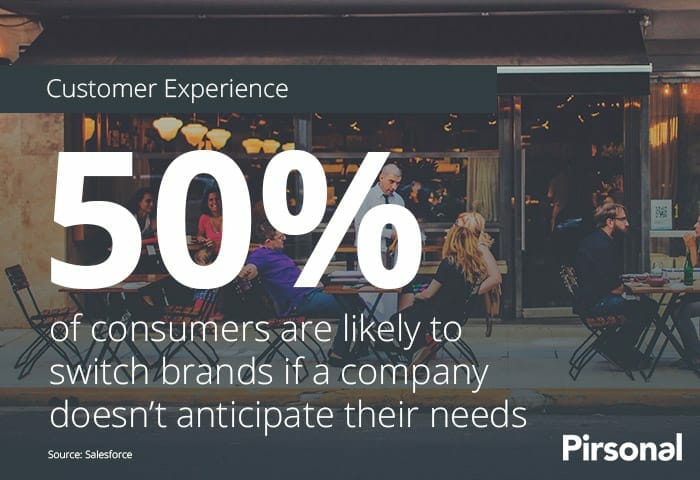
Customer engagement requires a personal touch and a degree of commitment. At the same time, personalization requires data. Data needs marketers that are patience.
Organizations are immersed in the engagement war. It is increasingly difficult for companies to get the attention of their customers the way it used to work.
Hence, many organizations are moving towards more comprehensive customer service. They take more care of their customers even before they become customers.
Indeed, studies show that customer commitment tends to behave as a mediator on customer satisfaction and trust that correlate to positive word-of-mouth (e-WOM).
In the same way, happy customers tend to spend more and become digital and physical “real estate” among family and friends on behalf of the brands they have a commitment with.
Again, here we see a clear correlation between customer experience and customer service experience.
Companies are positively forced to over-perform in order to evoke constant customer reactions that extend the lifetime value.
Modern Marketing Embraces Customer Engagement And Personalization From Day One
Until not that long ago, marketing was about throwing wet paper on the ceiling to check if it would stick there.
This doesn’t work anymore.
5. Personalized Marketing And Customer Engagement Builds Trust And Data
Using customer data in a way that is relevant to the individual is one of the pillars of personalized marketing. Today’s data protection state is based on trust. Customers allow organizations to host and manage customer data in order to receive clear value out of the transaction. Data requires a certain level of trust, not only by law but also by what customers expect.
You need to win your customer’s trust, commitment, and, yes, legal consent.
Getting customer data is not that difficult anymore. Building trust and loyalty, especially during uncertain times… That’s a separate conversation.
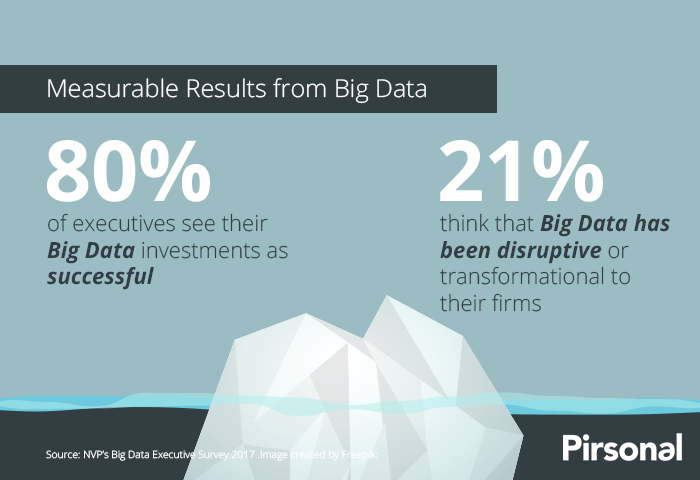
From the data that you can capture through marketing funnel touch-points, to customer data that you explicitly request from customers during an onboarding process, it all requires commitment.
Marriages are a lifetime commitment. Not just a contract I can break whenever I want.
Marriage is hard work.
Customer engagement works too. But when done right, it helps you build on trust.
Don’t forget that great relationships are built over time. In the same way, customer engagement doesn’t happen from one day to the other.
It takes time. This is how customer engagement differs from satisfaction. Relationships are not perfect. In the same way, when a brand-customer relationship is built on trust, even through ups and downs, customer loyalty stays intact.
Customer satisfaction positively influences customer affective commitment.
This makes personalized customer engagement important. Even more, a top priority for marketers.
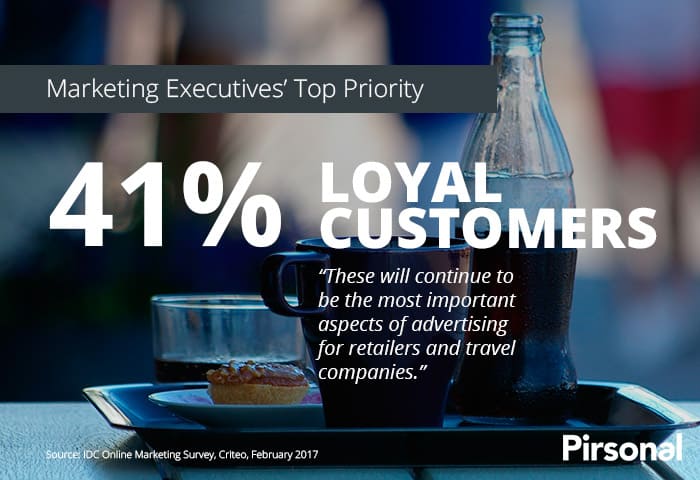
Again, this takes time. This time allows you to know more about your customers. You can truly know more about your audience. You can know more about their wants and needs. When you invest time to understand your customers’ expectations, preferences, and objections, you have a much more strategic approach to customer engagement.
This helps you get the results you’re looking for. When you build your organization on trust and data, you can create products and services based on your customer’s expectations, because you are able to anticipate the demand in the marketplace. This is one of the reasons why personalized customer engagement matters.
6. Customer Engagement Empowers Personalization To Create Marketing Segments That Build Commitment Over Time
Over the last 20 years, the marketing ecosystem has drastically changed. Customer behavior evolves, and this happens all the time. When an organization is committed to customers and customers are aligned with the given value proposition, companies are able to know more about their customers, even when they evolve.
This knowledge helps organizations create marketing segments to deliver personalized marketing messages through conversion funnels, online and offline.
There is something that hasn’t changed, though. Back in the “offline days”, marketing was a clear conversation lead by local businesses.
I’m a big fan of local businesses.
Here is why…
Especially when you are a loyal customer, they know your needs before you even walk in the door.
For online marketers, this is a bit challenging. Regardless of your marketing niche, there is a wide audience behind those famous five letters:
https://
Yes, we have lots of fancy marketing tools at our disposal, but even then most of the time we miss the point.
Marketing segmentation has changed the way organizations do marketing.
It has even changed the way consumers interact with brands.
Segmentation is when you split your potential target audiences based on specific characteristics that help you achieve your sales and marketing goals. From a marketing perspective, it helps you create strategies and messages that, as I usually say, talk to hearts, minds, and pockets.
But here is the deal…
Customers are also marketing experts. Somehow they know that you study their behavior. With the proliferation of marketing messages, the challenge for marketers is not only about how to create a customer engagement strategy your audience actually desires. The challenge is also related to how to break through the digital and social noise.
Customers are bombarded. All the time.
This is why marketing segmentation, micro-segmentation, and customer engagement need to work together from day one. It’s a matter of managing expectations early in the conversation. In fact, 78% of customers say that personalized content increases purchase intent. This allows marketers to get these customers to take immediate action and convert.
This is the majority of them! This means it can and should start early at the very top of your marketing funnel.
When you create marketing segments as part of your customer engagement strategy, you build trust.
This is probably why email, search, and social are priority channels for consumers. Channels where they have control over what they consume in order to start a conversation with the brands that create relevant, personalized marketing messages powered by customer data.
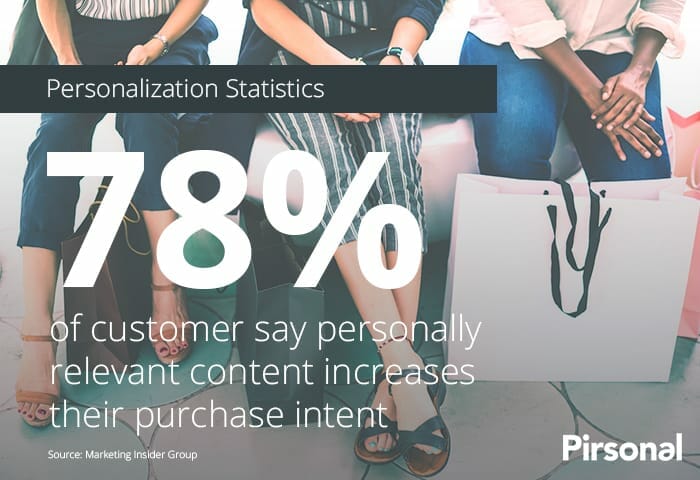
7. Customer Engagement Is The Basis Of Your Buyer Personas And Augmented Buyer Personas
How can customer engagement be improved? Buyer personas help you improve your customer engagement in different ways. Also your product’s or service’s value proposition. When you take the time to create buyer personas, you have more chances to increase profits and customer retention.
But there is no way to create buyer personas if first, you haven’t engaged with your customers.
A buyer persona is a fictional character created to represent a user type that might use your product or service but also is the person that will consume your marketing messages.
That would be a great first step but I’m sure we can do a bit better, which will lead us to the augmented buyer persona. So, what’s the difference between a buyer persona and an augmented buyer persona?
An augmented buyer persona is the profile of a specific customer. It is comprised of all the interrelated information you gather about your customer. You’ll usually use a set of data sources to know more about that person. Once you have this person’s buyer persona and you take into account the data you gather in close to real-time, you can create a truly personalized customer experience for that person.
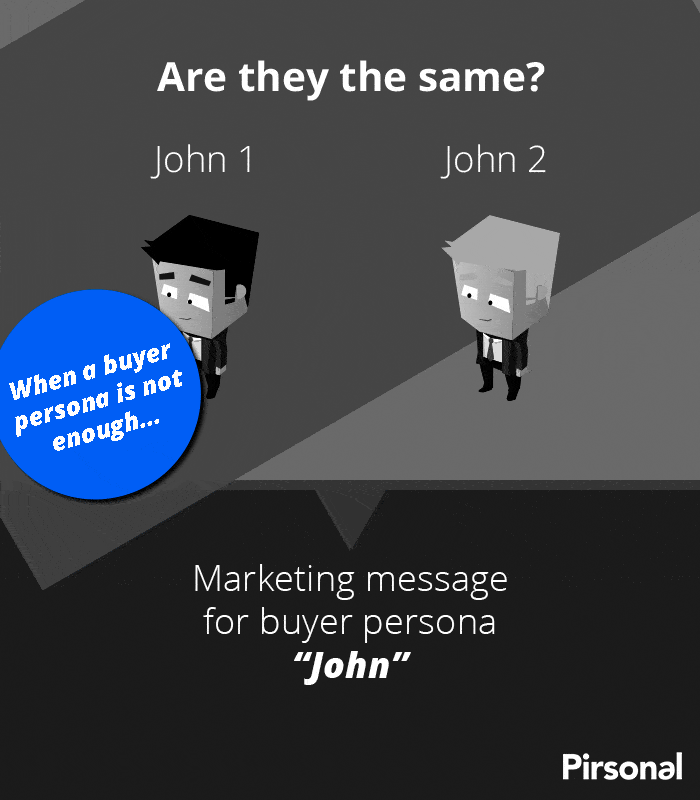
In my opinion, the difference lies in how you use the information you receive about each individual or customer in near real-time to make marketing decisions that affect, among other things, your marketing messages and the customer experience. When both things are aligned, the engagement rate increases.
A buyer persona is mostly based on other people but not precisely on the individual, you want to target. From an operations perspective, buyer personas are less flexible when thinking about products and services but can be really flexible when thinking about digital marketing.
Basing your marketing segmentation solely on buyer personas limits your game. It limits the potential you can reach with a personalized customer engagement strategy. Let’s see why…
8. How Customer Engagement Affects The Customer Journey
Like it or not, customer engagement is a vital part of the customer journey.
Most organizations don’t realize that even if they don’t have a customer engagement strategy in place, or even if they haven’t identified their customers’ journey, customers still experiment a degree of engagement when they interact with their brands.
Is this your case?
What is the customer journey? The customer journey describes the path of sequential steps and interactions that a customer goes through with a company, product, and/or service.
A great customer journey starts with an amazing customer experience.
9. Customer Engagement Is Part Of Proactive Conversation
Online marketing democratized marketing tools that allow any organization to create and distribute marketing messages to wide audiences. As marketing becomes a conversation, organizations are learning to talk and listen to their customers in a more proactive way. Any organization can do this.
The problem is that, at some point, marketers killed the conversation with all our marketing technology (Martech) and mass campaigns. Marketing messages became unilateral. And here is the point… From a consumer perspective, monologues are not fun in marketing. Even less if we talk about customer engagement.
Marketing requires constant exchanges of information. Same as customer engagement. When this information is based on the individual and you use this information to add clear value to the customer, we can start talking about personalized customer engagement.
Personalized marketing is a conversation. Conversations help you build trust with your customers. This trust helps you create a different level of commitment that extends the lifetime value of your customers.
This is where the money is. In the long-term commitment. This commitment comes in different ways. For example, customers that buy more from you, customers that don’t switch to the competition that easily, customers that share valuable product feedback, or that bring new customers to your funnel.
This is gold.
But here is the sad news.
The reality is that your customers can break their commitment to your service with a phone call, with a click on an unsubscribe button or sending an email to customer care.
It’s that simple.
This is how customer engagement should work. This is why personalized customer engagement is a must-have for your organization.
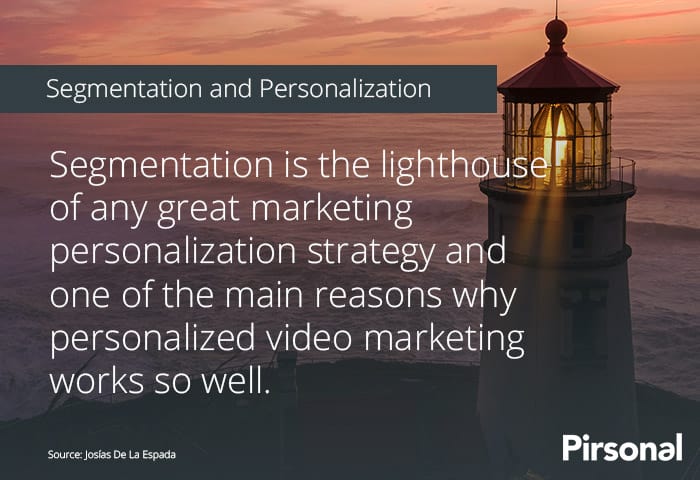
Because of this, brands need to constantly work on providing a wow-effect and excel at anticipating their customers’ expectations.
To do this you need to invest some time. You need to redefine what your customers’ priorities are and how to help them to get there. If you do this, you’ll walk with them to the next engagement stage. This is how you build an evergreen customer engagement process based on personalization.
This is why you need to invest time and resources and create marketing segments based on what you know about your customers. I’m talking about a proactive approach.
10. Customer Engagement Helps Create Winning Marketing Automation Workflows
A solid personalized customer engagement approach helps businesses find money in ways you may not thought about. The video above regarding how to create a personalized video workflow is based on a real-life example from one of our hotel clients at Pirsonal.
At Pirsonal we provide a personalized video platform that helps organizations evoke a reaction from their segmented audiences.
Start you personalized video free trial today.
Although our marketing software is used in a different industry, hospitality is one of my favorite. Hotels deal with clients’ expectations and objections all the time. Hotels are embracing marketing automation tools little by little. Also, competition and the different changes the industry and customer behavior have faced are positively forcing the industry to focus on customer or guest experience.
Please make sure to take a look at the document again. You can even download it from the same Slideshare link.
One of the reasons why I love that example is because it shows how data, segmentation, personalization and marketing automation play along to build a customer engagement workflow. This workflow brings new upselling opportunities. Basically, the hotel takes into consideration the characteristics of the customers to offer the type of marketing message, personalized call to action, and product that is a good fit for the individual. This helps them sell more from existing customers or guests that have already made a reservation.
11. Customer Engagement Helps You Differentiate From Competitors
Customer engagement is not just about which brand is the coolest. Customer engagement is also about money.
The reality is that unless you sell spaceships, chances are that your company is in a busy space. For most organizations, driving consumer engagement in an increasingly busy and distracted online space isn’t as easy as it used to be.
We are all distracted. Your customers are distracted.
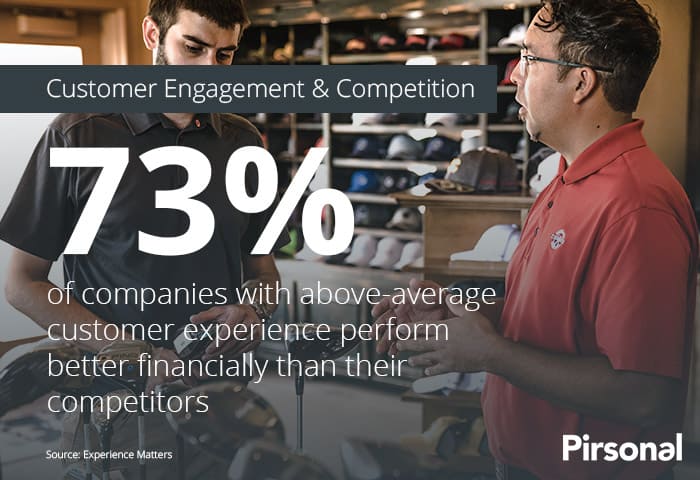
A study lead by Experience Matters shows that 73% of companies with above-average customer experience perform better financially than their competitors. These are organizations that look at their customers differently.
In my opinion, to understand a bit more about competition and customer engagement, we need to take a look at YouTube channels. Professional YouTubers fight daily to get your attention. From up-to-date content to great organic search optimization, they do it all.
These channels’ subscribers base is strong. One of the reasons for this is because YouTubers invest a lot of time and effort to understand what’s next. They ask for comments, create events, send surveys, and so on, in order to know what to produce.
The result? A lot of these YouTube channels are more successful in terms of share than any given known TV channel.
Over the last few years, video consumption has increased. Every major online distribution platform has heavily invested in video. The vast majority of marketers use video for their marketing.
Why?
It’s a matter of attention.
Video marketing works because it tells your stories and allows the viewer to get to know you better. This is one of the reasons why video personalization, marketing automation, and customer engagement are best friends. You get to produce the personalized content your segmented audience needs, individually.
Marketers leverage interactive video marketing to deliver a customer-centric after-sales experience.
I’m talking about personalized video stories meant to make people react.
In fact, this is why personalized video marketing has become a great opportunity for brands to differentiate from the competition.
How Personalized Marketing Shapes Customer Engagement
If personalization is the rock, segmentation is the lighthouse of any excellent customer engagement strategy. It leads you at the same time to a robust personalized marketing strategy.
Marketing personalization connects all the dots to deliver the right customer experience, with the right message at the right time. Ideally, it helps you target your customers in a way that makes sense according to their expectations.
Personalization takes into consideration the customer journey, your customers’ expectations, concerns, desires, and any previous interaction with your organization.
Remember this:
One of the most apparent choices a consumer has is to pay attention to what you have to say. You are not their priority. They are.
Here is when things like email opening ratio, video engagement ratio, or net promoter score are crucial. This is why customer analytics and customer experience tools have risen in the last couple of years.
One of the most obvious and effective ways to apply personalization to your customer engagement game plan is personalized video marketing.
Personalized video marketing well done pays back. Personalized videos get higher CTR than generic videos. About 164 %. And videos are by the fault the type of content with the best conversions.
But personalized videos are not magic.
To create a successful personalized video strategy, you need to pay attention to some of the topics I have shared in this article: Data, trust, and consistent engagement.
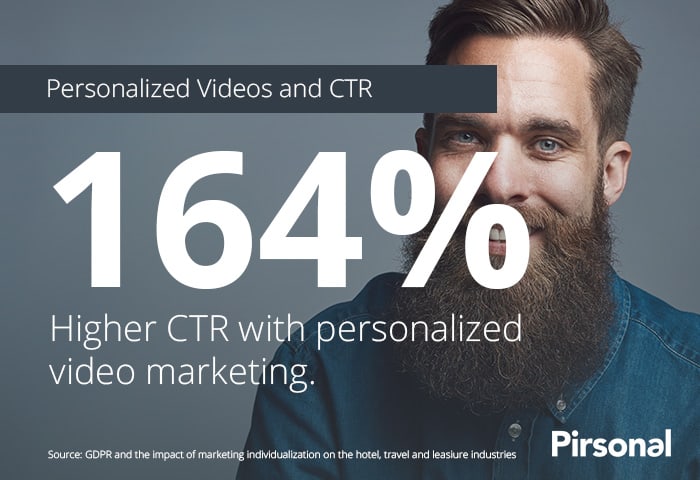
Take a look at the following marketing automation workflow infographic:
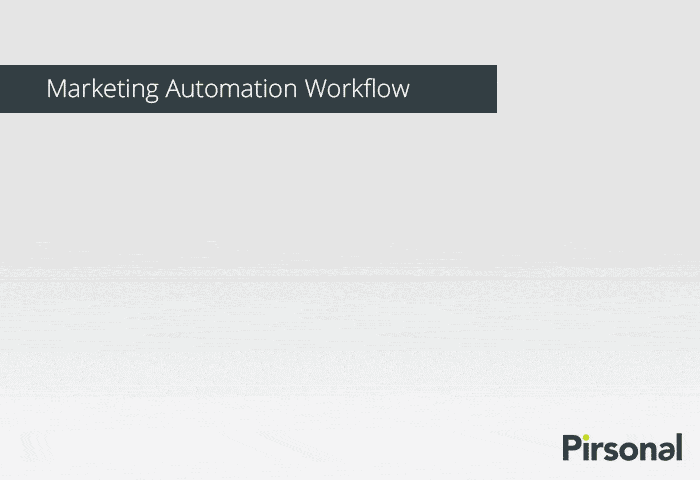
Marketing automation example with personalized videos
Now, take a look at the following personalized video marketing automation workflow:
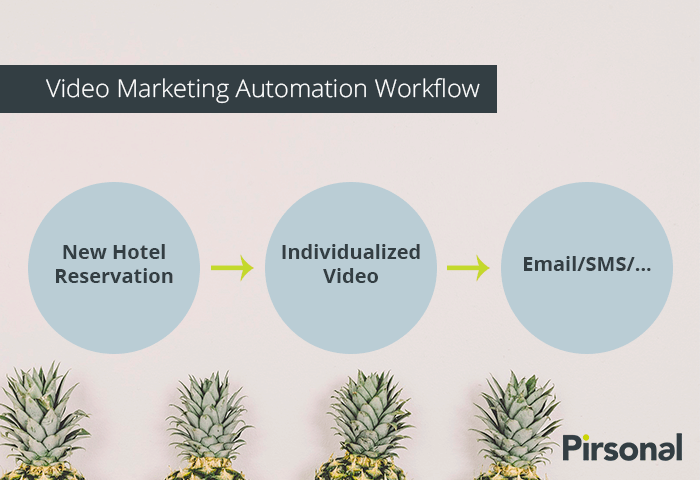
In this example, a new hotel reservation takes place. In order to increase customer engagement and loyalty, the hotel automatically creates a personalized video as part of a marketing automation process.
If you think about the hospitality industry, Hotels no longer sell beds. Guest experience gradually becomes the main product.
A personalized video in a scenario like this one helps you build a wow factor. When brands use personalized videos for their marketing, they are able to anticipate customer expectations.
You probably want to see examples of how organizations do personalized video marketing. We created a complete guide on personalized video marketing with real-life examples, best practices, stats, and use cases. So, read this full guide on personalized video marketing and see personalized video examples.
You’ll also see how some brands use Pirsonal’s personalized video marketing software to increase customer engagement.
How To Create Marketing Segments To Support Customer Engagement
To create marketing segments, it is imperative to understand the following seven types of segmentation criteria. One of the first steps when segmenting your audience is to create subsets or subgroups with common characteristics. Think about the following concepts:
- Demographics: Demographic segmentation is one of the most commonly used forms of segmentation. Analyze who they are based on criteria such as age, income, number of family members, race, gender, occupation, education, and nationality.
- Skills and knowledge: The things your prospects, users, and customers know and how they apply this knowledge.
- Things your target audience like about your products
- Behavioral activities: Analyse the behaviors and decision-making processes. For example, think about their lifestyle, how, when and why they buy and more.
- Psychographics: This takes into account how your target audience thinks and divides markets according to lifestyle, personality traits, values, opinions, and interests of consumers.
- How your target audience uses your product: Do they use your product like you initially expected? When do they use it? With other people?
- How they buy your products: Similar to the behavioral activities, looking at their processes, how much they spend, when they buy, from what device, if they buy based on a special promotion, and more.
Marketing segmentation and customer engagement are based on what you know about the individuals you want to target. As you probably know, marketing has a lot to do with questions.
These segmentation questions will help you bring this back to earth:
- What data can you actually use? Think outside the box. Don’t focus on a Name (only). For example, if your organization is a hotel and you want to use personalized video marketing to increase customer engagement, everything counts: number of nights, number of people in the reservation, number of adults, number of kids, location of the hotel, dates (are there any activities?), has this guest used a coupon?
- Do they share any demographic similarities?
- Have you noticed any behavioral patterns?
- What communication channel does each individual prefer?
The answers to these questions will take you to the contextual data arena. There are two reasons why should not miss this step:
- It will help you understand more about a variety of buyer personas within your current and future target audience.
- It will help you create marketing messages to retain and re-engage with customers thanks to what I call the augmented buyer persona.
Conclusion – Why Personalized Customer Engagement Matters For Your Personalized Marketing Plan?
Customer engagement is an organizational mindset. It constantly aligns an organization’s value proposition to what their target audience of customers expects. When this happens, businesses can get a deep understanding of how and how their customers are. At the same time, adding marketing personalization to your customer engagement strategy will help you make the experience of your customer with your brand to the next level.
Customer engagement is important for personalized marketing as it maximizes what you know about customers, lifetime value, and conversions.
It will help you increase your customers’ commitment to your brand. At the same time, it will help your team to get to know your customers better. They will have to strive to be more granular.
As found by Oriol Iglesias, Stefan Markovic, and Josep Rialp, employee empathy negatively moderates (fixes) the relationship between sensory brand experience and customer satisfaction.
When your marketing messages and strategy get to the point of granularity, your messages are much more effective. Your distribution is much more successful. Therefore, your conversions improve considerably.
Customer engagement can no longer be conceived without a personal approach, which at the same time starts with customer data. It would not make sense.
Once the effort has been made to take customer engagement into consideration for your personalized marketing campaign strategy and vice-versa, you will see that the benefit exceeds the investment.
You will be able to differentiate yourself from your competitors. Likewise, you can create marketing personalization strategies that convert better, powered by marketing funnels that adapt to your customer’s experience.
You will also create better products and services, thanks to more accurate feedback based on knowledge.
Start your personalized marketing with a strategy based on engaged customers.

